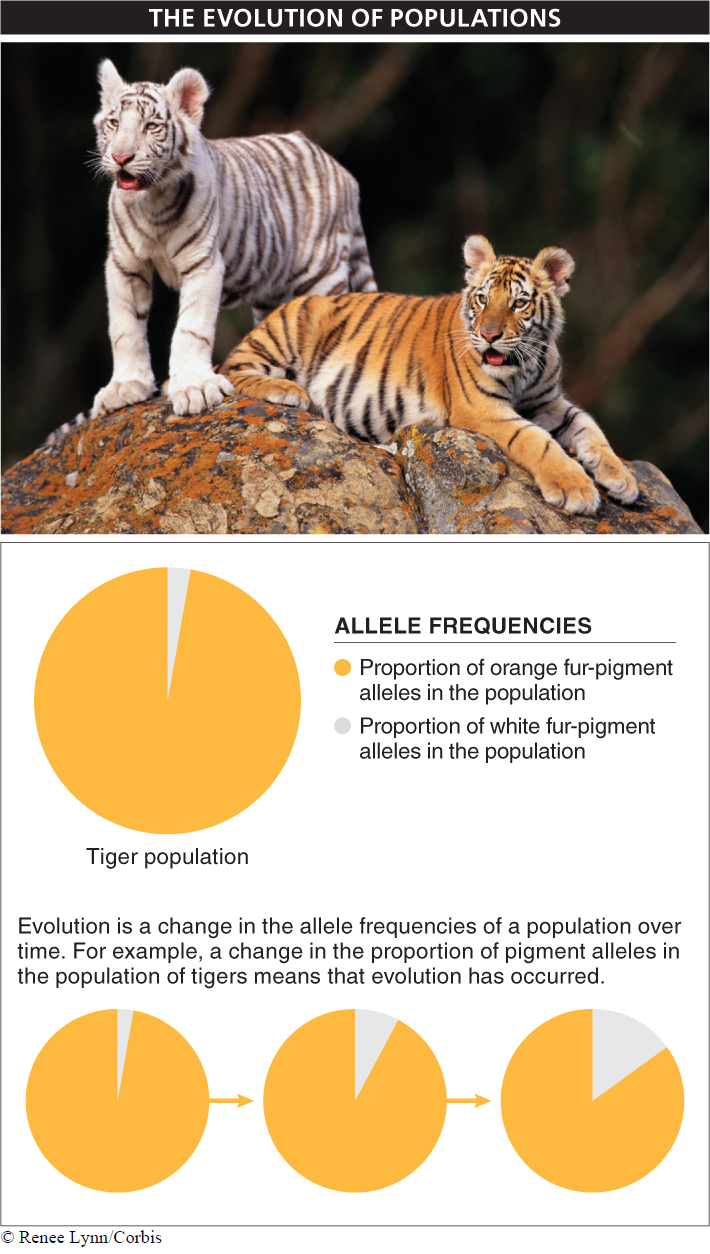8.5–8.10: Four mechanisms can give rise to evolution.

Suppose you were put in charge of a large population of tigers in a zoo. Almost all of them are orange and brown with black stripes. Occasionally, though, unusual all-

One possibility is that you could alter the population by trying to produce more animals with the white phenotype. In this case, your best strategy would be to try to breed the white tigers with each other. Over time, this would lead to more and more white tigers. And as the generations go by (this will take a while, though, since the generation time for tigers is about eight years), your population will include a higher proportion of white tigers. When this happens, you will have witnessed evolution, a change in the proportion of alleles for the pigment-
Another way you might increase the proportion of white tigers in your population would be to acquire some white tigers from another zoo. By directly adding white tigers to your population, the population would include a higher proportion of white tigers (you might even trade some of your orange tigers, which would further increase the proportion of your population that is white). By adding white tigers or removing orange tigers, you will again have witnessed evolution in your population.
As this example illustrates, evolution doesn’t involve changing the genetics or physical features of individuals. Individuals do not evolve. Rather, you change the proportions of the alleles in the population. An allele’s frequency is the proportion in which it is present in a population relative to the other alleles of the same gene, much like its “market share.” In the tiger example, the white-
Any time an allele’s market share changes, evolution is taking place. Perhaps the most dramatic way we see this is in acts of predation. When one organism kills another, the dead animal’s alleles will no longer be passed on in the population. And if certain alleles make it more likely that one animal will be killed by another—
Darwin demonstrated that natural selection could be an efficient mechanism of evolution and a powerful process that results in adapting populations to their environments. Evolution and natural selection, however, are not the same thing. Natural selection is one way that evolution can occur, but it is not the only mechanism of evolutionary change. It is simply one of them, and the only one that leads to adaptation (FIGURE 8-10). The four evolutionary mechanisms are:
- 1. Mutation
- 2. Genetic drift
- 3. Migration
- 4. Natural selection

326
Keeping in mind that evolution is genetic change in a population, we’ll now explore each of these four processes that lead to such genetic changes.
TAKE-HOME MESSAGE 8.5
Evolution is a change in allele frequencies within a population. It often occurs by four different mechanisms: mutation, genetic drift, migration, and natural selection.
Describe the relationship between evolution and natural selection. Can individuals evolve?